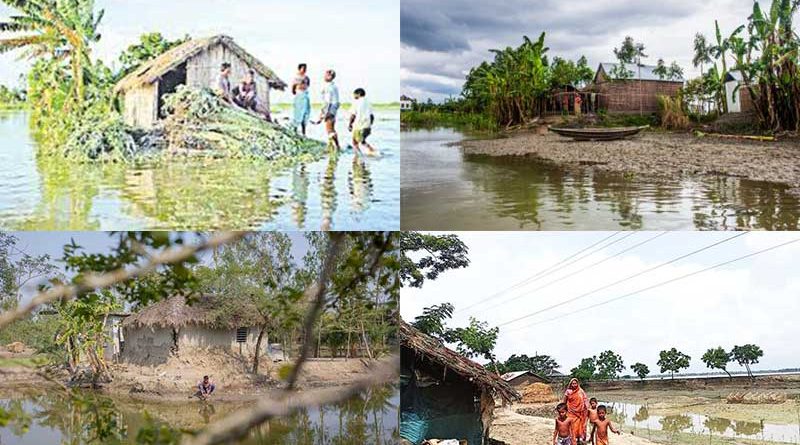Natural Calamities of Bangladesh
Natural Calamities of Bangladesh
Bangladesh is a country that is highly vulnerable to natural calamities due to its geographical location, climatic conditions, and socio-economic factors. Situated at the confluence of several major rivers and on the Bay of Bengal, Bangladesh is frequently exposed to the devastating impacts of floods, cyclones, storm surges, river erosion, and droughts. These natural disasters not only cause significant loss of life but also wreak havoc on the economy, agricultural productivity, and infrastructure of the nation. Flooding is one of the most common and recurring natural calamities in Bangladesh. The country experiences annual monsoons, during which heavy rainfall causes rivers to overflow, inundating vast areas of land, especially in the low-lying regions. The floodwaters submerge crops, disrupt transportation networks, and destroy homes, displacing millions of people. These floods are often exacerbated by the melting of glaciers in the Himalayas, which contribute to the swelling of the river systems that flow into Bangladesh. Cyclones and storm surges are another major threat faced by Bangladesh, particularly in coastal areas. The Bay of Bengal is notorious for generating powerful tropical cyclones, which bring heavy rains, high winds, and storm surges that inundate coastal communities. Cyclones such as Sidr in 2007 and Aila in 2009 have caused extensive damage, with thousands of fatalities and widespread destruction of property. Storm surges, which result from the strong winds of cyclones, often cause further devastation, pushing seawater inland and flooding coastal settlements. River erosion is a significant problem in Bangladesh, where the dynamics of shifting riverbanks and sedimentation cause large-scale erosion along many rivers. This continuous erosion destroys agricultural lands, homes, and infrastructure, forcing people to migrate and contributing to the loss of livelihoods. Additionally, Bangladesh is also prone to droughts, particularly in the northwest, which severely affect agricultural production. A prolonged drought can lead to crop failure, water scarcity, and food insecurity, which further exacerbate the socio-economic challenges faced by the population. The vulnerability of Bangladesh to these natural calamities has prompted the government and various international organizations to invest in disaster preparedness, early warning systems, and infrastructure development. However, the frequency and intensity of such disasters continue to pose significant challenges to the country’s resilience and sustainable development.

